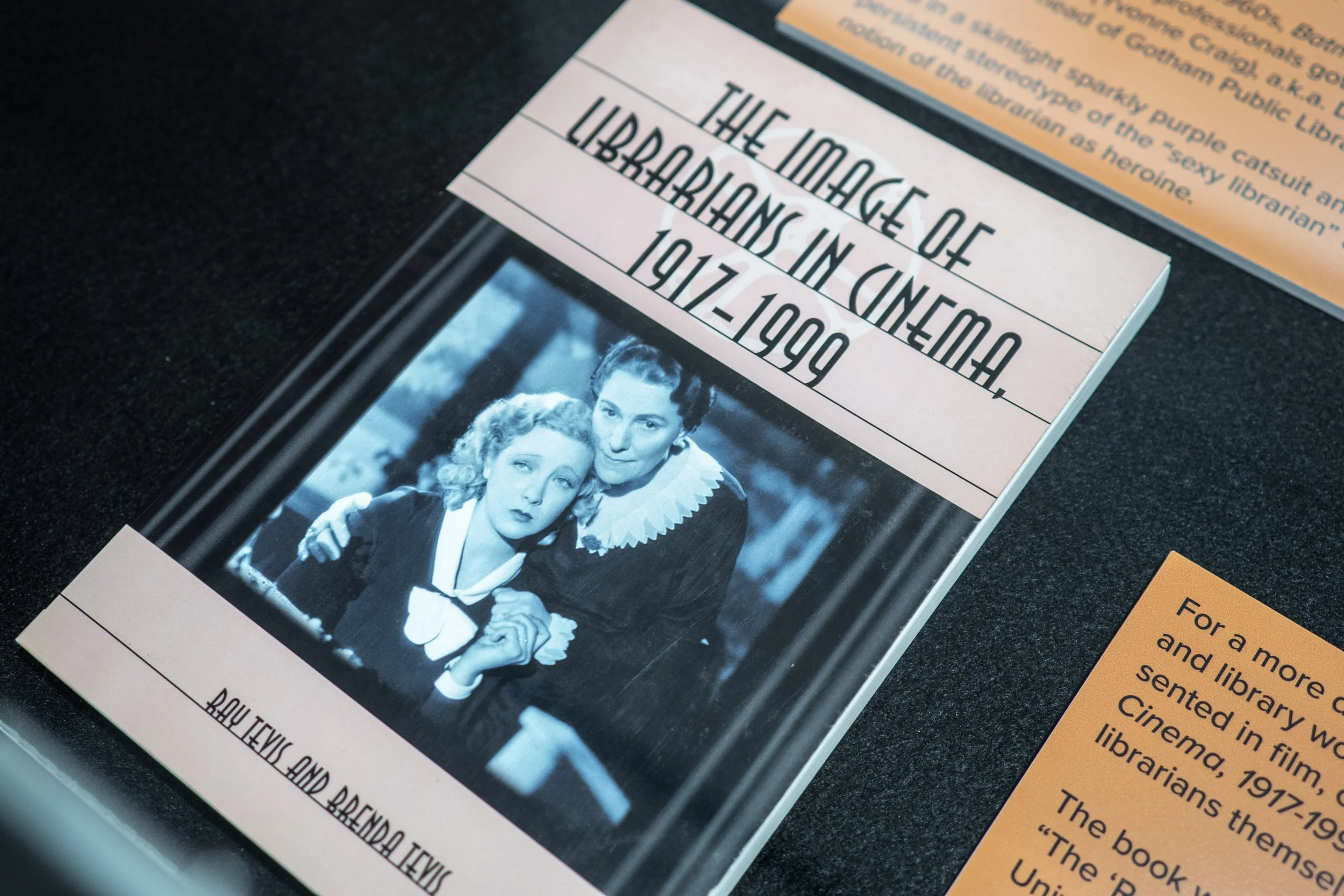
Library Labor - A temporary Companion Exhibit to Rule N° 5
As a temporary companion to Rule N° 5, the artists curated content for one large vitrine and three smaller flat display cases inside the Avery Fisher Center of NYU Libraries, adjacent to Radio. Below is a summary description of this exhibit, on view until February 2024.
Audio Description Coming Soon!
A Window Into Library Work
Behind each object you might encounter in a library, there are dozens of human hands and hours of labor that have made that item available to you. In a diorama titled “A Window Into Library Work,” we attempt to quantify and make visible some of the mysterious stirrings behind the scenes. Beside various objects in a library worker’s fictional office, including a database license on a desk, a book cart of new acquisitions, and an open laptop for virtual chat reference, the quantity of invisible labor work required is made visible, enumerated, and quantified through a playful diorama.
Professional Qualifications, Attributes & Rules
Starting in the late 1800s, professional literature began to outline some of the desired attributes for librarians, often revealing the chauvinistic, puritanical, and racist perspectives that underpin the early foundations of librarianship. Conformity to strict standards and rules was a priori. From rigid shelving and cataloging standards, to even a special form of penmanship, librarians have been required to learn and follow many rules and to exhibit particular personality or physical traits, both explicit and implied, such as politeness, helpfulness, and whiteness.
Early hiring manuals and library periodicals curated for one flat case illustrate some of these problems. Beyond questions about personality and disposition on one such guide’s inventory, we ask viewers to ask themselves: what is missing from this checklist? What other requirements, such as whiteness or socio-economic class are implied in these texts?
Library Workers Resist
Amidst ongoing racism and discrimination in the field, there is also a rich history of grassroots dissent, reform, and resistance in libraries. Library workers have challenged biases embedded in library practices, organized for better pay and working conditions, and have held the field accountable to its professed values in myriad ways. This display case represents a few select examples.
For instance, librarians have pushed back against standard classification systems like the Dewey Decimal System and the Library of Congress Classification System by describing materials on their own terms. Notable forerunners include librarian Dorothy Porter, who challenged and rejected racist library classification practices in the 1930s, and the collective efforts among library workers across institutions to create the Chicano Periodical Index and Chicano Thesaurus in the 1970s.
The journal Progressive Librarian, published since 1990, is one example of professional literature where librarians have pushed for social justice and exposed librarianship's active and passive complicity in exploitative and oppressive systems. More recently, born-digital journals and zines, such as LIS Microaggressions, provide outlets for library workers to join forces, build community, and address racism and many other -isms in the workplace.
Representation in Pop Culture: Reinforcing and Subverting the Librarian Stereotype in Film
In a third display case, stills from five films representing a wide range of popular works from the 1950s-2020s illustrate some of the most prevalent ways library workers have been stereotyped in media as “sexy” librarians, bunned and bespeckled shushers, or even superheros working behind-the-scenes.
For a more detailed dive into the various ways librarians and library workers have been stereotyped and represented in film, visitors are invited to check out The Image of Librarians in Cinema, 1917-1999 by Ray Tevis and Brenda Tevis, both authors librarians themselves.
The book was inspired by a library science course titled “The ‘Reel’ Librarian” that Ray Tevis taught at Ball State University and grew into a full monograph with extensive filmography.
Recruitment
Early recruitment tools, including this 1947 video, reveal stereotypes of the profession that endure today: librarianship is a feminized, white profession.
Viewers may interact with this work via an iPad adjacent to the display cases.
Produced by Vocational Guidance Films, Inc. and Holmes Burton Films, the “Your Life Work” Series was a set of educational shorts from the early 1940’s meant to inspire young post-depression workers into specific new careers. The scripts were penned by Iowa State College professor Arthur P. Twogood.
The Librarian, 1947
Holmes Burton Films
Courtesy of the Prelinger Archives



